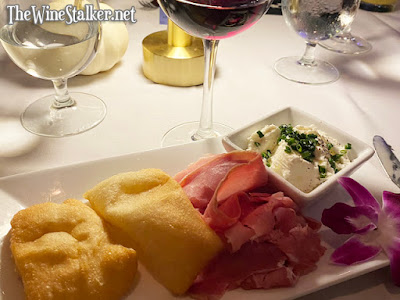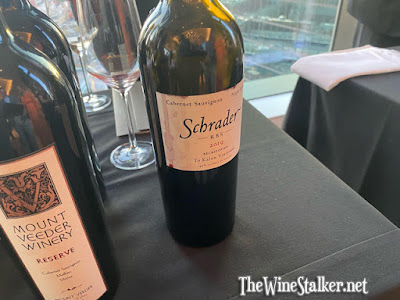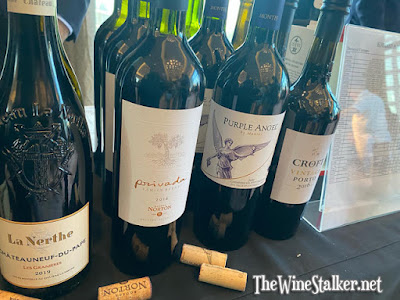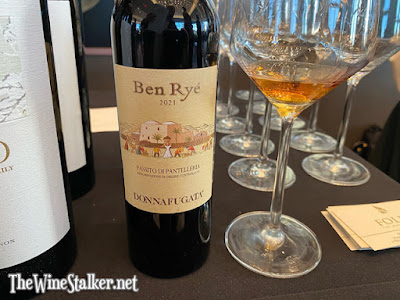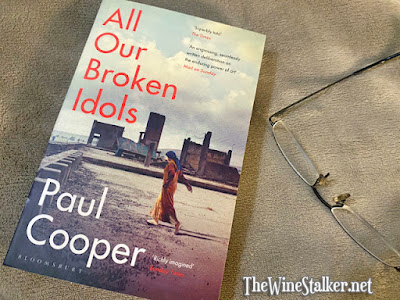I was lucky enough to try this stuff before purchase and liked it enough to go online and buy full bottles. Lifted Supreme is basically a non-alcoholic "spirit" with THC, and is more like a liqueur than anything. The Citrus tastes just like Mountain Dew (yummy!) and the Dark has brown spice flavors like cinnamon and nutmeg. You can make cocktails with these or just shoot it! For what I want to get out of this kind of thing, a 1.5 ounce shot is good enough, and two shots is too much. I'm new to the whole "weed is legal" thing, so I'm not really sure what else you really want to know about it other than it's up to 42.5 mg of THC in each bottle.
Thursday, November 30, 2023
Lifted Supreme Citrus and Dark
By Joey Casco CSW/CSS November 30, 2023
marijuana, non-alcoholic, quickie, review, spirits, thc, USA 67 comments
Saturday, November 25, 2023
Book Review: "Alcohol: The World's Favorite Drug" by Griffith Edwards (2000)
"Alcohol: The World's Favorite Drug" was published in 2000, one year before I was legal to drink. I heard about it in the past month when it was mentioned in the book "Drunk" (read my review of that book here), and I was able to purchase a used copy online that once called Richards Library in Newport, New Hampshire, home.
The author of Alcohol is Griffith Edwards; an MD whose work is on the study of addiction to alcohol and other drugs, and you can definitely tell. The book is kind of misleading in title, as it focuses on alcohol dependency most of the time. And it does so very effectively, especially when it talks about alcohol dependency from the viewpoint of the dependent; how they think about it and the excuses they tell themselves.
It is not misleading in saying that it's "a look at fact and falsehoods, and how to tell the difference." There are many things that we all think we know about the history of alcohol that simply aren't true, but we've been conditioned into believing them by rhetoric from the anti-alcohol and pro-alcohol movements and industries.
"Alcohol is a fact around which are created myths, and those myths themselves then become powerful facts."
With the 90th anniversary of the repeal of Prohibition upon us, let's use that as an example. The Gin Craze in eighteenth century England was really really bad, but nothing has touched alcohol abuse as much as America in the 1830's. This is when the US was at 18 liters per capita in consumption, whiskey was cheaper than tea and coffee, and there certainly was fair enough grounds for a temperance movement to grow. At first this movement was just against distilled spirits, but the conditions in the 1830's lead it to be against any alcohol at all, such as beer and wine
Fast forward 90 years, with many events and individual state prohibitions in between, what was a valid movement against a very real problem had become the myth that all alcohol consumption is evil and the cause of all of mankind's woes, which is simply not true but many still believe. This all lead to the US national Prohibition. Over the next decade and beyond, the anti-Prohibitionists blamed speakeasies and organized crime and bootlegging on Prohibition, and even though those existed long before Prohibition, this is rhetoric we still believe. Fascinatingly, calling alcoholism a disease started in the 1800's but faded in the early 1900's... but then it was revived by the anti-Prohibitionists to say "hey, it's not the alcohol that's the problem, it's YOU!"
"With intoxication, there is the supposed removal of decent civilizing restraint when those centres (autonomic nervous system) are anaesthetized by alcohol and the more primitive parts of the brain are allowed to take over control of the behavior. Often there seems to be more of a metaphor than of brain science in this kind of theory."
So yes, the book explains how facts turn into myth and then myth into facts as we know them, and it does it very well with each topic it touches.
Alcohol is basically a book about "to-drink-or-not-to-drink", a history of alcohol dependency and abuse, and then even recovery. So while it claims to be neither for or against the consumption of alcohol, and it proves that many times by staying with facts and keeping opinions in the grey area, the outcome of everything that it discusses weighs heavily on the downside of drinking over the upside. Honestly, that's where that facts go in science and history. (Drunk goes into how important drinking is to our social needs as humans, but still comes to the same conclusion in physical health costs.)
Thus, it is a very powerful book for those who need to quit, want to quit, struggling to be sober, or successful in sobriety.
It can be anyone. "... proneness to develop alcohol dependence does not have any single master explanation to cover every individual. It is not a matter of some people being doomed to alcohol dependence by their genes while the rest of us drink with impunity. And for any one individual no simple causal explanation is likely to suffice."
Monday, November 20, 2023
Silver Oak wine dinner at The Port in Harwich, Cape Cod - October 5th, 2023
On the fifth of October this year I attended a wine dinner with Silver Oak's Matt Katz. Luke's of Cape Cod (of which I am the marketer) helped put it on at The Port Restaurant + Bar in Harwich, MA. It was a whole lot of fun! And the wines, food, and the pairings of the two were incredible. Pics or it didn't happen!

First Course: Scallop Risotto
Sea scallops, smoked bacon and corn risotto with fresh thyme and scallions
TWOMEY SAUVIGNON BLANC
TWOMEY SAUVIGNON BLANC
Prosciutto, fried dough, ricotta cheese with olive oil
TWOMEY PINOT NOIR
SILVER OAK NAPA VALLEY CABERNET SAUVIGNON
Seared roasted beef tenderloin served with a rich wine sauce
TIMELESS BY SILVER OAK
TIMELESS BY SILVER OAK
Sunday, November 19, 2023
Horizon Beverage tasting in Boston - October 3rd, 2023
Photos from the Horizon Beverage tasting in Boston on October 3, 2023.
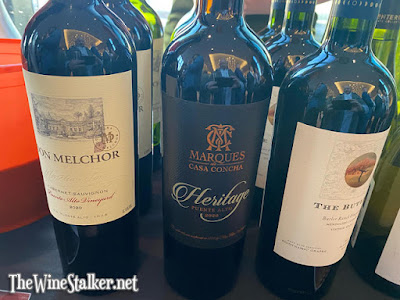
Don Melchor Cabernet Sauvignon 2020, Marques de Casa Concha Heritage 2020,
The Butler 2020
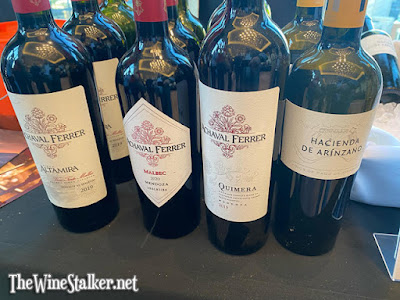
Achaval Ferrer Altamira 2019, Achaval Ferrer Malbec 2020,
Achaval Ferrer Quimersa 2019, Hacienda de Arinzano
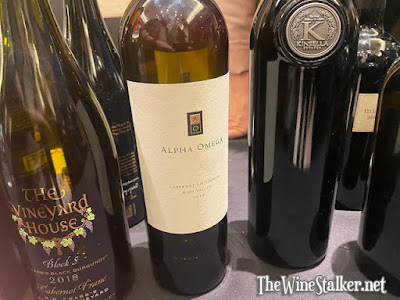
The Vineyard House Block 5 Cabernet Franc 2018,
Alpha Omega Cabernet Sauvignon 2019, Kinsella Estate Cabernet Sauvignon

Herman J. Wiemer Gewurztraminer 2020, Herman J. Wiemer Dry Riesling 2021,
Herman J. Wiemer Semi-Dry Riesling 2021,
Herman J. Wiemer Field White Table Wine, Fallegro Gianni Gagliardo
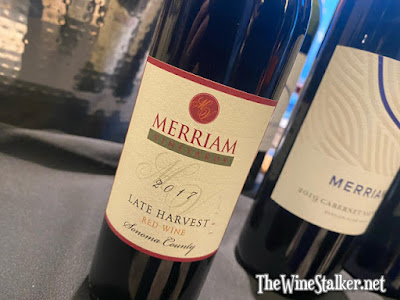
Merriam Vineyards Late Harvest Red Wine (Cabernet Franc) 2017
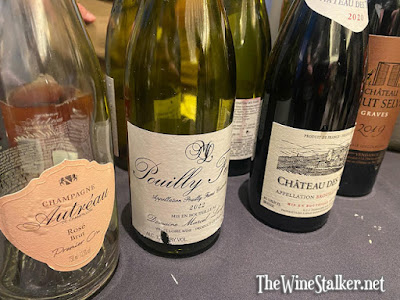
Champagne Autréau Rosé Brut, Domain Langoux Pouilly Fume 2022,
Chateau Des Tours Brouilly

Mexican Wine: Casa Magoni Origen 43 2020, Laberinto Vino Tinto Blend,
El Bajio Marselan Red Wine, Tré Sangiovese
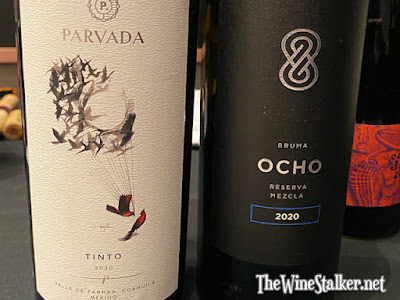
Mexican Wine: Parvada Tinto 2020, Bruma Ocho Reserva Mezcla 2020
Wednesday, November 15, 2023
Book Review: "All Our Broken Idols" by Paul Cooper
This book has nothing to do with wine (I believe alcohol is only mentioned maybe twice), but it was so good that I just had to share. As a huge fan of history, I was listening to the Fall of Civilizations Podcast's episode about Assyria when at the end the host, Paul Cooper, mentioned he wrote a novel that takes place during the reign of Ashurbanipal. So of course, I had to get it.
All Our Broken Idols actually takes place in the same place but in two different times. Yes, one story takes place in ancient Ninevah in the 640's BCE, but the other takes place in modern Mosul in 2014 CE.
In the ancient story, Aurya is the main character. She's a teenager living in an Assyrian village. It appears to me that her older brother has some form of autism; he literally remembers everything, every little detail about every moment, goes into sensory overload quite often, and is a gifted artist. When their father suddenly dies (I won't tell you how) just before he was to sell a huge rock to King Ashurbanipal, they travel with the King and his men to the city of Ninevah to start anew.
In the modern day story, Katya is the main character. She's a 26 year old archeobiologist, meaning she's an archeologist who specializes in plants (very important in archeology). Her father was from Iraq and moved to England where he met her mother. But he was a reporter and about 10 years earlier he went back to Iraq to report on the conflicts there, and he never came back. Rather than going to Greece for a site to work at, she chose the ruins of Ninevah to search for her roots and possibly her father. And if you were paying attention to world events back then, you know what happened to Mosul back in 2014.
The writing and storytelling is wonderful, and the two stories intertwine beautifully, culminating together perfectly. I ripped through this book so quick it's not even funny because I couldn't put it down. Highly HIGHLY recommended.
Sunday, November 12, 2023
Book Review: Wine Economics by Stefano Castriota
I was sent this book to review in December of 2020, just after one very difficult event in my life and just before another. Needless to say, I never got around to reading it until now.
Wine Economics was originally written in Italian, and later translated into English by and for the use of MIT (Massachusetts Institute of Technology) in 2020, with the addition of bringing the United States' Prohibition into discussion. I'm not sure when the original Italian version was printed, but none of the studies referenced or data given in the book took place after 2016. Being almost 4 years old (or older) there are just a few things that are probably a little out of date now but no big deal as they're still relevant. There is one that will give you a chuckle, though: When it states that there couldn't be a new adult beverage genre that could hurt sales of all other existing adult beverages, it clearly didn't see the canned cocktail craze coming.
Wine Economics covers EVERYTHING in, well, wine economics. From the vineyard, to the winery, to the consumer. It includes important things that need to be understood in the wine world, such as why prices will keep going up as the temperature does from climate change, the profound universal impact of cooperatives in every industry, how rapid increasing of appellations could cause consumer confusion, and even the benefits of local vineyards for people who do not drink.
It is very much a university textbook, so be prepared for reference names and years very, very often. Certain parts of the book were hard for me to get through, with my ADHD, because of this distraction occurring so often. Also, there are a lot of graphs and none of them made a lick of sense to me. Numbers and graphs are not the kind of smart I am.
"For every company that records very heavy losses, there is another that makes huge profits."
What is completely fascinating about this book is that it breaks down things in way that other wine books do not. When it talks about New World vs Old World, it just doesn't talk about style or laws. It breaks down, at length, the differences of production, distribution, company structure, marketing, and consumption, as well.
Because this is Wine Economics book, it isn't trying get you to have an opinion on something or make you believe in one side of something. It's simply stating facts, and it points out a lot of conflicting studies when it needs to be said there is a real reason for not having full evidence of something. Studies are so inconsistent on whether or not heavy investments in quality lead to actual higher profits, that it might not. There is less money invested in making an ocean of swill, and its sold for less, but it sells more. Apparently the only investments consistent for higher profit is aging, advertising, and promotion.
Also, take alcohol abuse, for example. There is no evidence that alcohol abuse is more prevalent with the poor and/or unemployed than the rich and/or employed because studies are always so different. It could be that the rich and/or employed have the means and tools to hide alcohol abuse better. But it also nails down consistent studies that leave no doubt of their accuracy, such as alcohol abuse is much higher in newly legal consumers and the elderly than those aged between.
This book is not for everybody. As I said, it is very much a university textbook with a lot of information and ZERO personality in its narration. But boy, did I learn a lot about things that I didn't even know that I wanted to know with all that information. The amount of research on statistics and studies done to make this book is staggering.
"Building a reputation requires significant short-term investments to obtain long-term returns."
Here's a list of things included in Wine Economics that I thought were worth mentioning:
Chapters 1-2: Costliness of consumption trends to wineries, concentration of varieties due to globalization, wine publicity's focus on higher quality win instead of the more produced and consumed jug and bulk wine, why wine prices will increase as the temperature does with climate change, grape growing contracts with wineries, how prices are established
Chapters 3-4: Porter's five forces of the wine sector (threat of new entrants, bargaining power of buyers, bargaining power of suppliers, threat of substitute products or services, rivalry among existing competitors), the structure of different forms of wine companies and their motivations, the profound universal impact of cooperatives in every industry (and how their existence has been ignored in education since McCarthyism), the innovation boost of industrial clusters
Chapters 5-6: big statistical study break-downs on if investments in wine collecting are are actually worth it, wine auctions, winery stocks, risk insurance for damage and currency, investment theory (there is all sorts of calculus-like formulas here and I have no idea what the heck is going on), collective and individual brand reputation, institutional reputation with explanation of European classification systems, problems with Italy's system, rapid increasing of appellations creating consumer confusion, studies on social capital of communities
Chapters 7-8: externality consequences and solutions for wine producers and consumers, the benefits of vineyards for those who do no drink wine, benefits of moderate consumptions (such as reduction of risk of cardiovascular disease), damage from abuse (physical and mental health, work, suicide, accidents, violence, cost in society), combating and preventing abuse, services like Uber may have increased alcohol abuse and bar employment, taxation of alcohol, USA's three-tiered system, the unlikely team-work of alcohol distributors and anti-alcohol movements (joining together to fight free distribution)
Labels
*SPONSORED*
ABriefHistoryOf
Abruzzo
Agiorgitiko
Aglianico
Airen
Albarino
Aleatico
Alentejo
Alexander Valley
Alicante Bouschet
Alsace
Apothic
Argentina
Armagnac
Arroyo Grande
Arroyo Seco
audio article
Australia
Austria
Baco
Barbera
Barrossa Valley
Batman
Beaujolais
beer
Best Of
biodynamic
blend
blog
Bogati
Bonarda
book
Bordeaux
bourbon
box wine
Brachetto
brandy
Bulgaria
Burgundy
Cabernet Franc
Cabernet Sauvignon
Cahors
Caino Blanco
California
Campania
Canada
Canaiolo.
cans
Cape Cod
Captain America
Carignan
Cariñena
Carmenere
Catalonia
Cava
Central Coast
certification
Chablis
Chalk Hill
Champagne
Chardonnay
cheese
Chenin Blanc
Chianti
Chile
China
cider
Cinsault
Clarksburg
cocktails
Cognac
Colombard
Columbia Valley
comics
Cotes-du-Rhone
Counoise
Croatia
CSW
Dane Cellars
DC
dessert wine
Distill Wars
Dona Blanco
Douro
Dry Creek
Dunnigan Hills
Edna Valley
Falanghina
February
Felix Hart
Fer Servadou
Fiano
fiction
Finger Lakes
Folle Blanche
formulas
France
Franciacorta
Frankovka
Frappato
Furmint
Galicia
Galilee
Gamay
Garganega
Gascony
Germany
Gewurtztraminer
gin
Glera
Godello
Graciano
greco di tufo
Greece
Grenache
Grenache Blanc
Grillo
Gros Manseng
Gruner Veltliner
GSM
guest blog
Heroes
history
horror
how to
Hungary
interview
Israel
Italy
Japan
Jerez
Kansas
kosher
Lambrusco
Languedoc-Roussillon
Left Coast
Leyda Valley
Lisboa
Livermore
Lodi
Loire
Loureira
love letter
Macon
Madeira
Madiran
Malbec
Malvasia
Marcillac
marijuana
Marlborough
Marsanne
Marselan
Marvel
Massachusetts
Matchbook
Mavrud
Mazuelo
McLaren Vale
mead
Melnik
Mencia
Mendocino
Mendoza
Meritage
Merlot
Mexico
Michigan
mixology
Monbazillac
Monstant
Montecucco
Montepulciano
Monterey
Montery
Moscato
Mosel
Mourvédre
Muscadelle
Muscat
mythology
Napa
Navarra
Nebbiolo
Nero d'Avola
New York
New Zealand
news
non-alcoholic
nonfiction
Norello Mascalese
North Coast
Oakville
Oregon
organic
original meme
pairings
Palestine
Pecorino
Pedro Ximenez
Perricone
Petit Verdot
Petite Sirah
Petite Verdot
photo gallery
phylloxera
Picpoul
Piedmont
Pinot Blanc
Pinot Gris/Grigio
Pinot Meunier
Pinot Noir
Pinotage
Pliny
podcast
Port
Portugal
Press Release
Primitivo
product
Prosecco
Provence
quickie
quote
rakia
recipe
retail problems
Retsina
review
Rheingau
Rhone
Rias Baixas
Ribera del Duero
Riesling
Rioja
Rondinella
rose
Roussanne
Rubin
Rueda
rum
Russian River
Sagrantino
Sake
Salta
Sandanski Misket
Sandeanski Misket
Sangiovese
Sangria
santa clara
Santa Lucia Higlands
Sauvignon Blanc
science
scotch
Sekt
Semillon
Seyval Blanc
Sherry
Sicily
Somontano
Sonoma
South Africa
South Australia
Spain
spark
Sparkling
Spider-Man
spirits
stemware
storage
study
sulfites
Superman
sustainable
SWE
Syrah
Tannat
Teenage Mutant Ninja Turtles
Temecula
Tempranillo
Tequila
Texas
thc
The Flash
Tinta Amarela
Tinta Caiada
Torrontes
Touriga Nacional
Traminer
Trebbiano
Trincadeira
Turkey
Tuscany
Ugni Blanc
Umbria
USA
Valdiguié
Valiant
Valpolicella
vegan
Veneto
Verdejo
Verdicchio
Vermentino
Vermont
Vermouth
Vernacca
Vidal Blanc
video
Vinho Verde
Viognier
Virginia
Viura
vodka
Walla Walla
Washington State
whiskey
White zinfandel
Wildstorm
Willamette
wine
Wine Bloggers Off-Topic
wine club
Wine Pick
Wolverine
Wonder Woman
Zinfandel
Zweigelt





